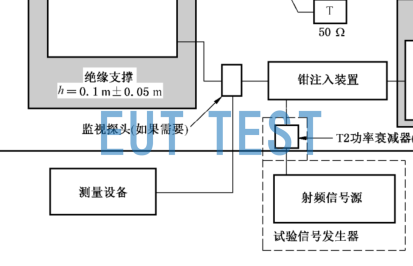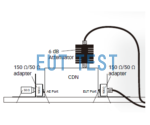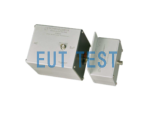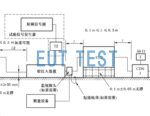Introduction:
The current clamp test method is one of the test methods in the conducted immunity test system proposed by the international standard IEC61000-4-6 and GB/T 17262.6. The test purpose of this method is that the current injector clamp couples the high-frequency signals to the interconnecting cables of the EUT, and it can also be added to monitor the current probes together with the test, and then observe whether the EUT's working status is affected. EUTTEST offers a wide range of current probes at various frequencies.
EUTTEST provides standardized current clamp conducted immunity test systems. The following test configuration diagram explains how to build an EMC-CS test system using current injection.
start testing
Calibration configuration diagram for current clamp test method:
The current clamp test method requires calibration before testing can begin, and EUTTEST provides the following list of test equipment that needs to be used for test channel calibration:
- NSG 4070C1 More Conducted Immunity Generators Available
- 150Ω/50Ω Adapter
- 6dB Attenuator
- 50Ω Load
- RF cable
- current injection clamp
- Current monitoring clamp
After contacting EUTTEST to purchase the above equipment, connect the NSG4070 output to the input port of the current injection clamp according to the following diagram, and record the displayed value of the NSG4070 to confirm the forward power output level Vout.
Repeat each test frequency at 150kHz-230MHz as required by IEC61000-4-6 and record the Vout value at each frequency point.
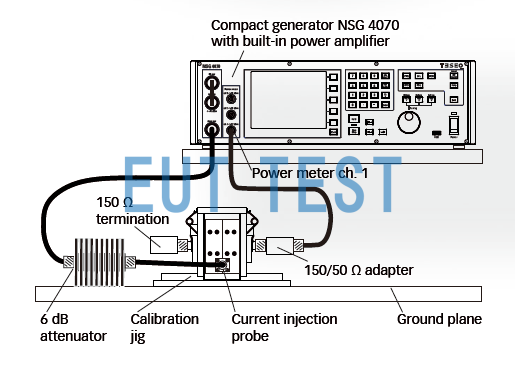
Calibrating Current Clamp Input Level Vout with NSG4070
Test configuration diagram for the current clamp test method:
The equipment used for the current clamp test method is the same as that used for calibration, and no additional equipment needs to be purchased.
After completing the above calibration process, we get the output level Vout of the NSG4070, now use the configuration in the figure below to connect the DUT and the AE auxiliary equipment, and inject the Vout at different frequency points into the internal EUT through the current injection clamp, and use the current monitoring clamp to monitor the injected current signal in real time, at this time, we will need to observe and record the EUT's working status, and then record each of the At this time, we need to observe and record the working status of the EUT, and then record each Vout value and the working status of the EUT in the test report.

Injecting Vout signals into interconnect cables using NSG4070 and current clamps
Test Summary:
The above is the IEC61000-4-6 conducted immunity test system provided by EUTTEST current clamp test method, EMC testers only need to follow the above configuration to complete the standard requirements of the RF field induction conducted immunity test needs, if you have any questions about the above test program, please contact EUTEST to purchase the above equipment and according to the content of the above section to build the test system after the Contact our after-sales personnel for advice.
The GB/T 17626.6-2017 version adds the requirement for decoupling pliers, please check the products below for more information.
CMAD 1614 Common Mode Decoupling Clamp

